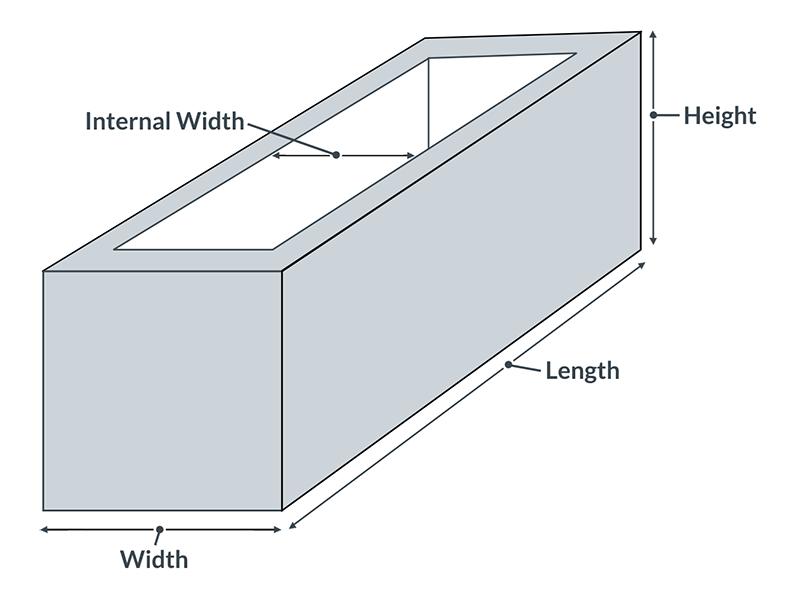
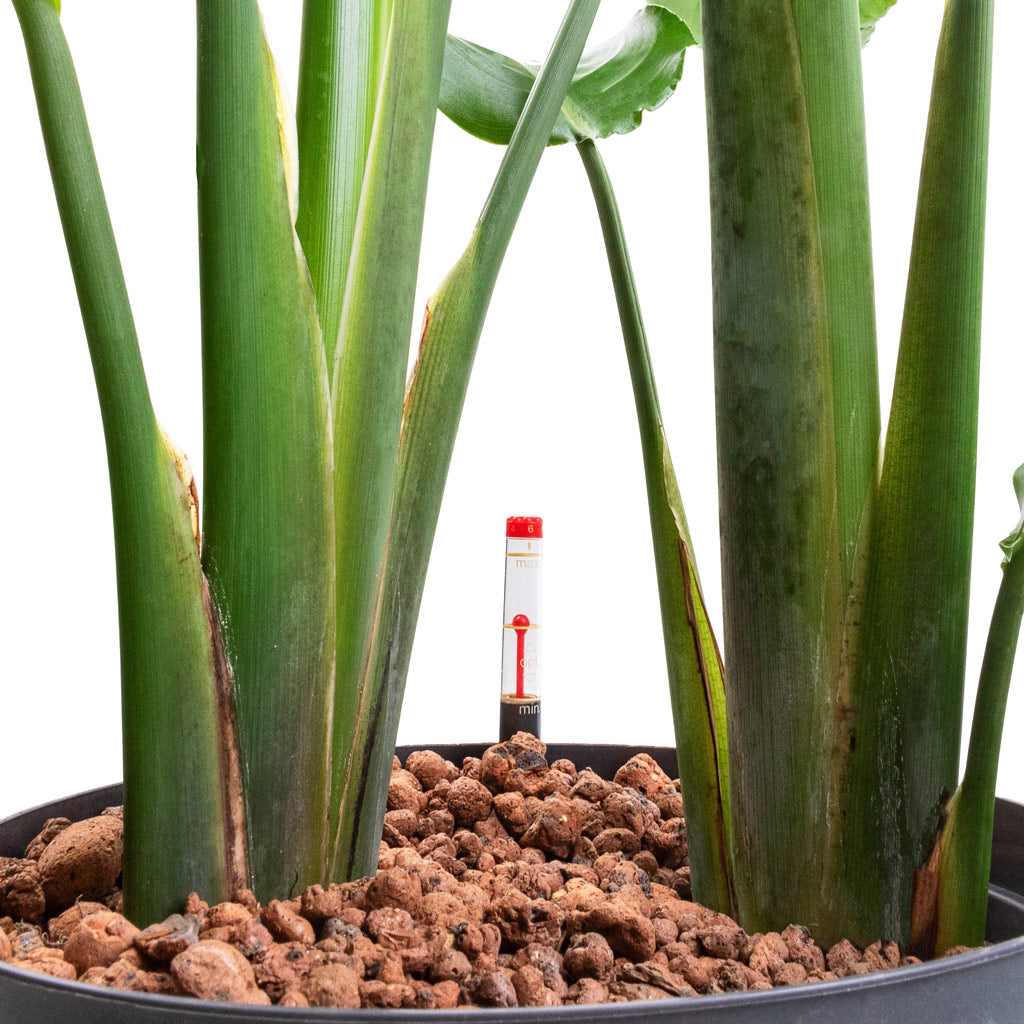
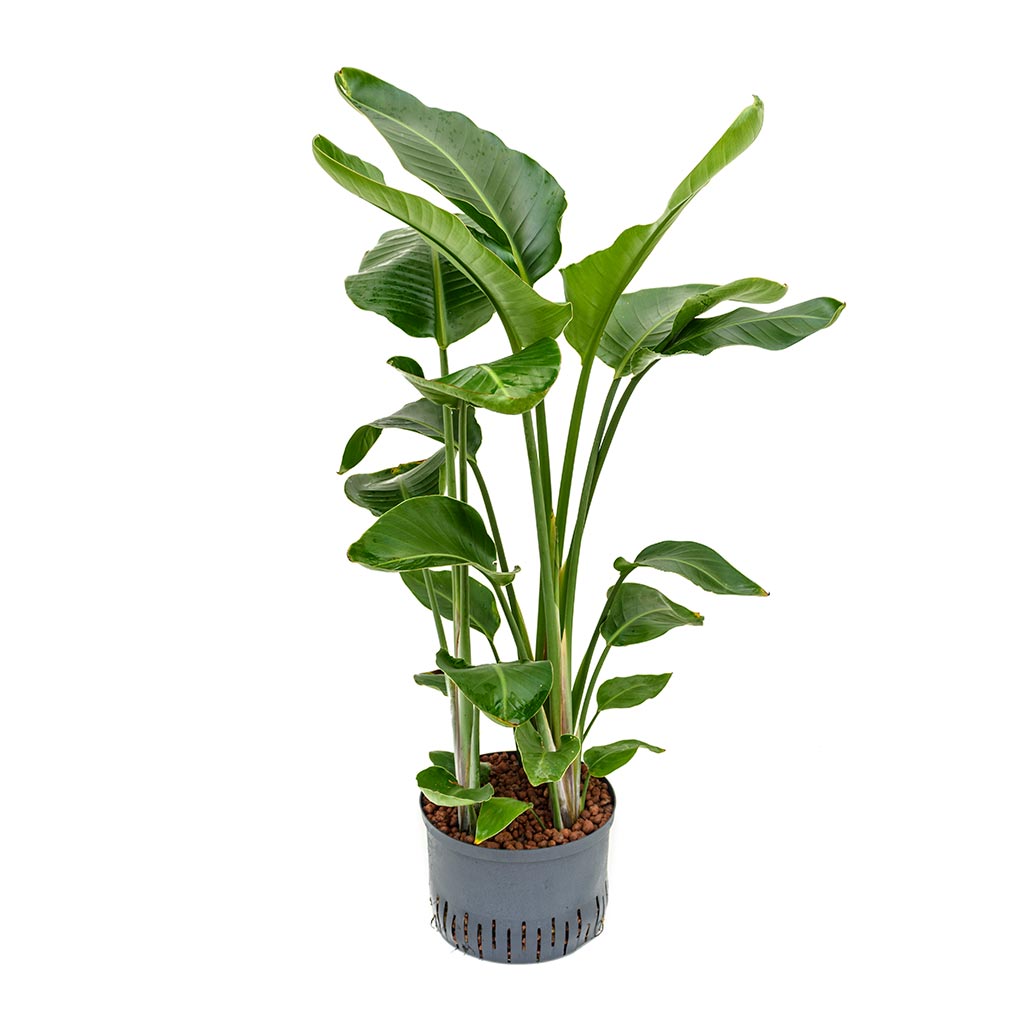
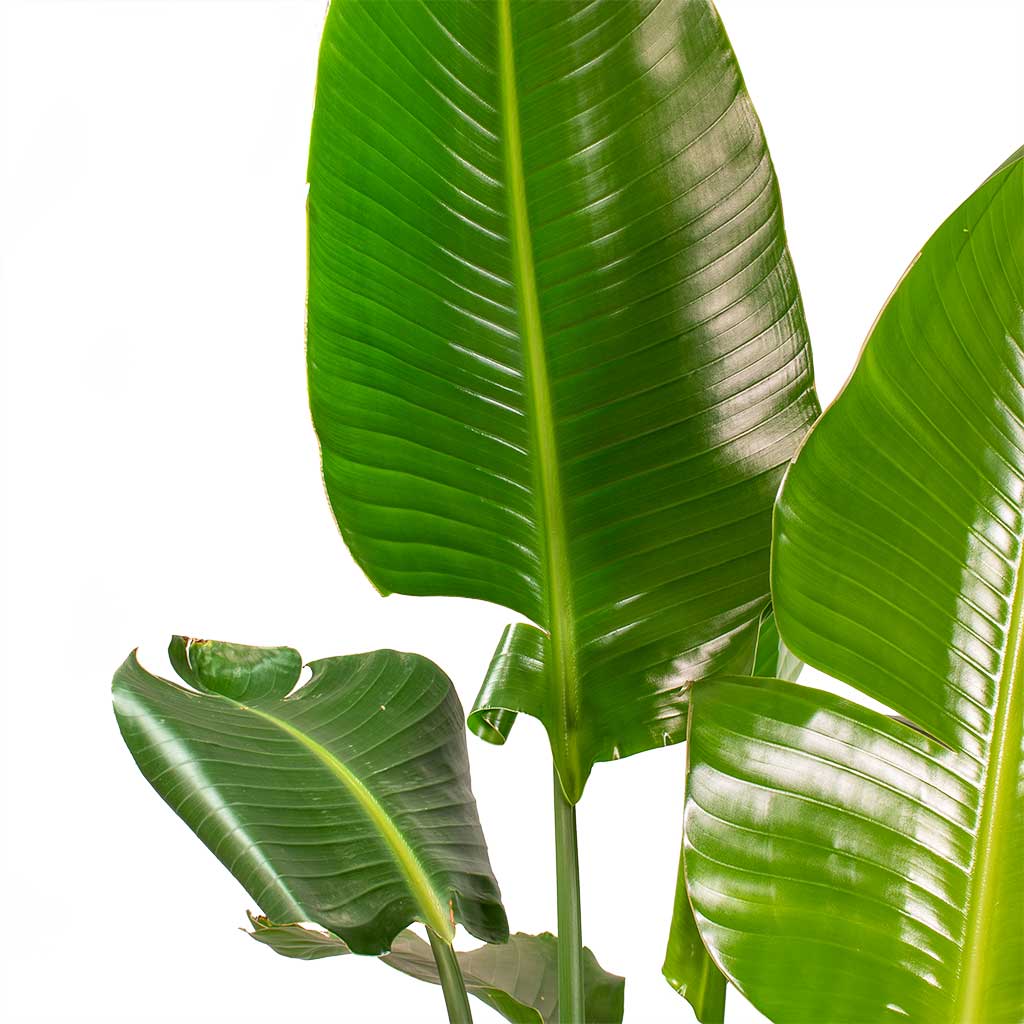
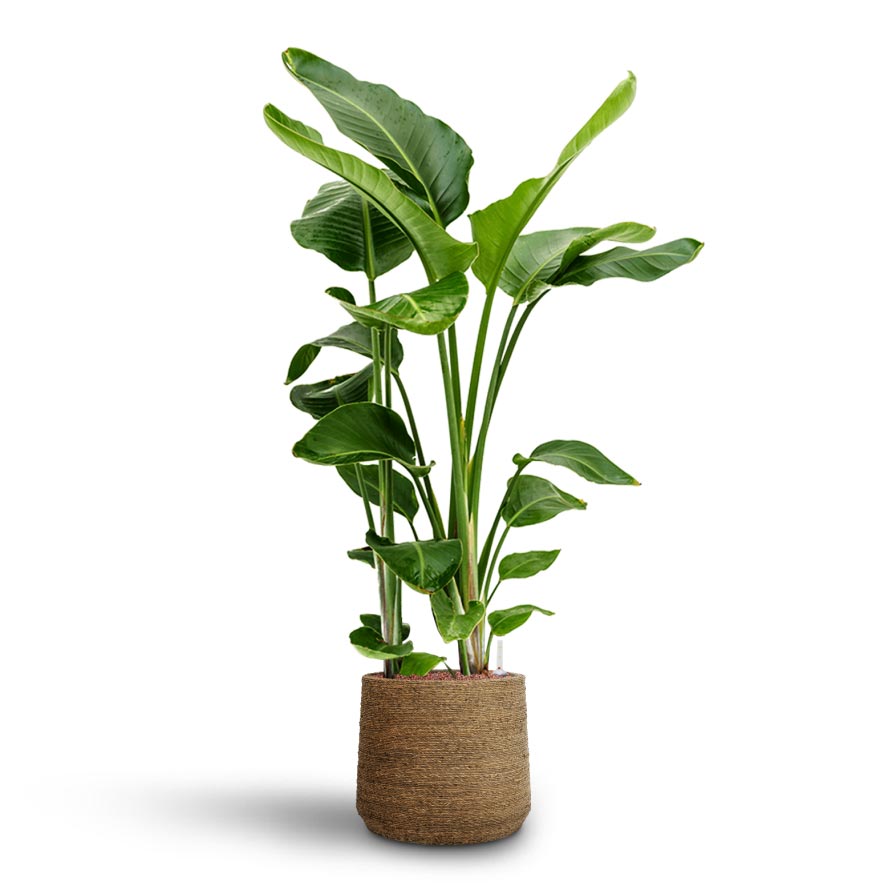
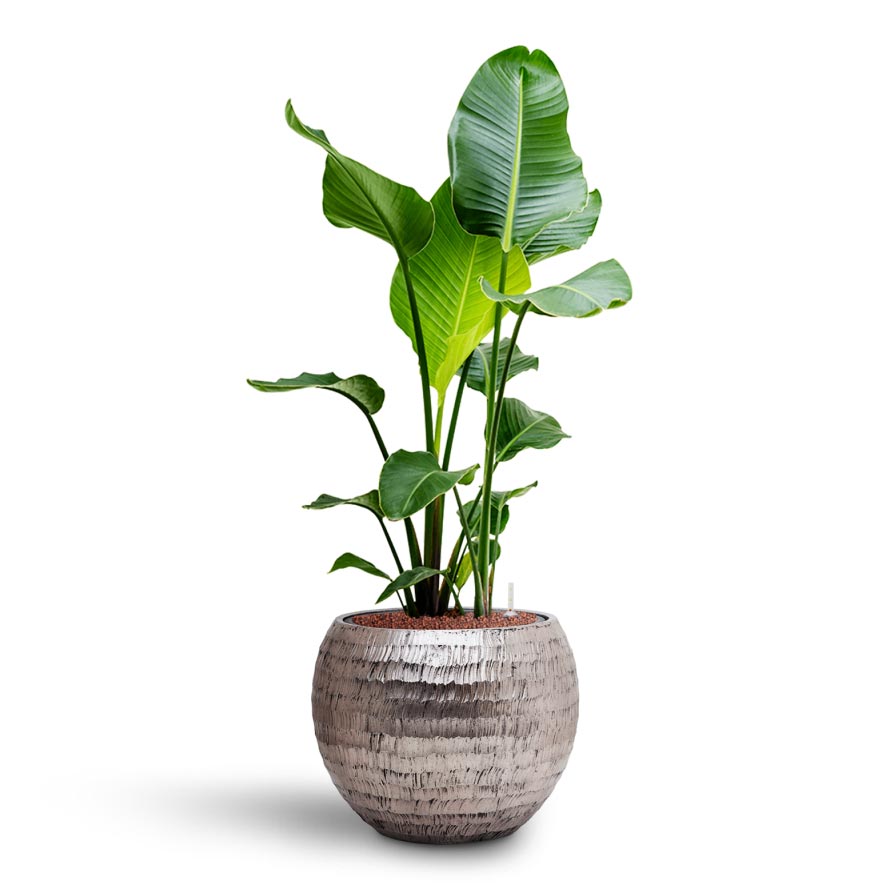

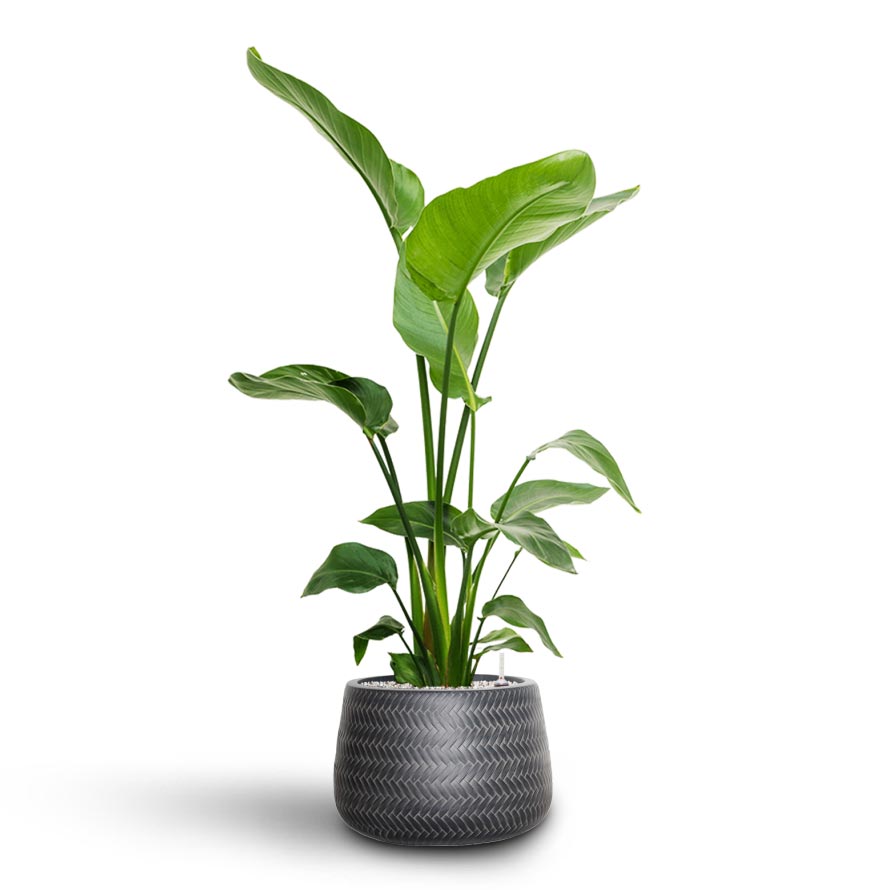
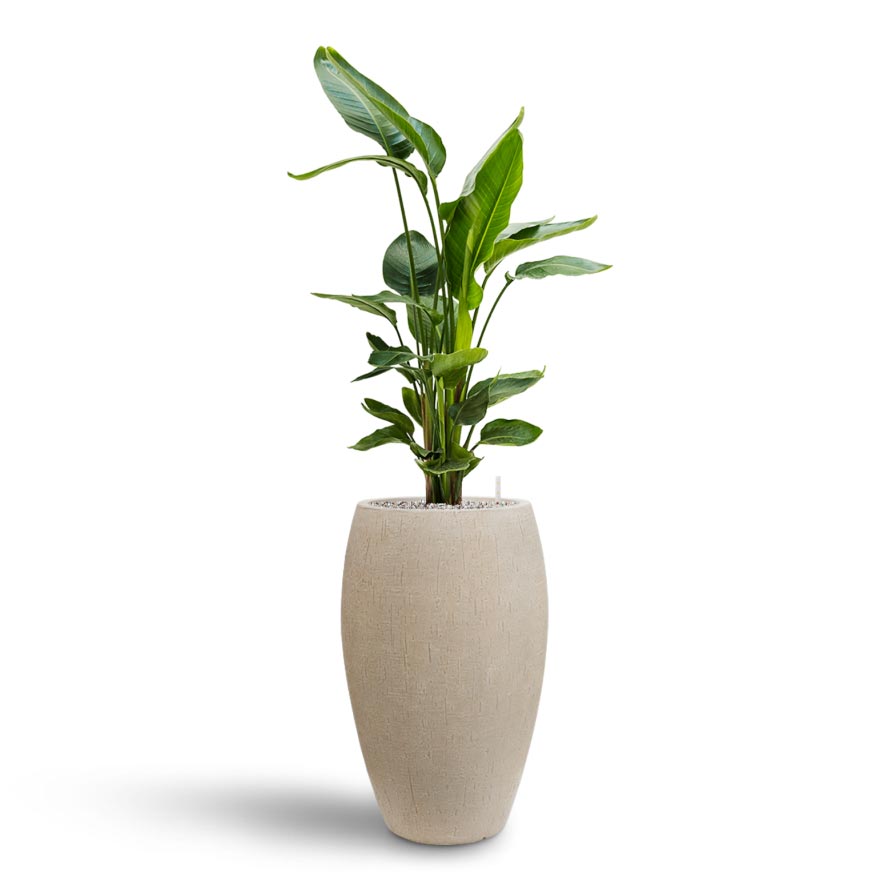

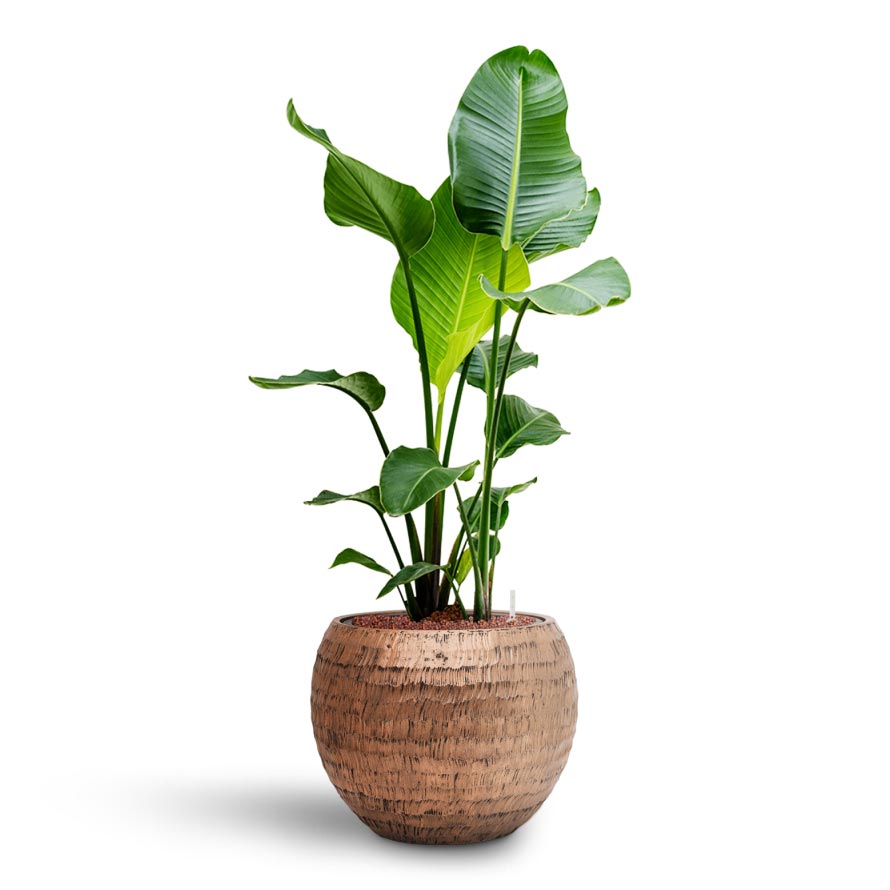

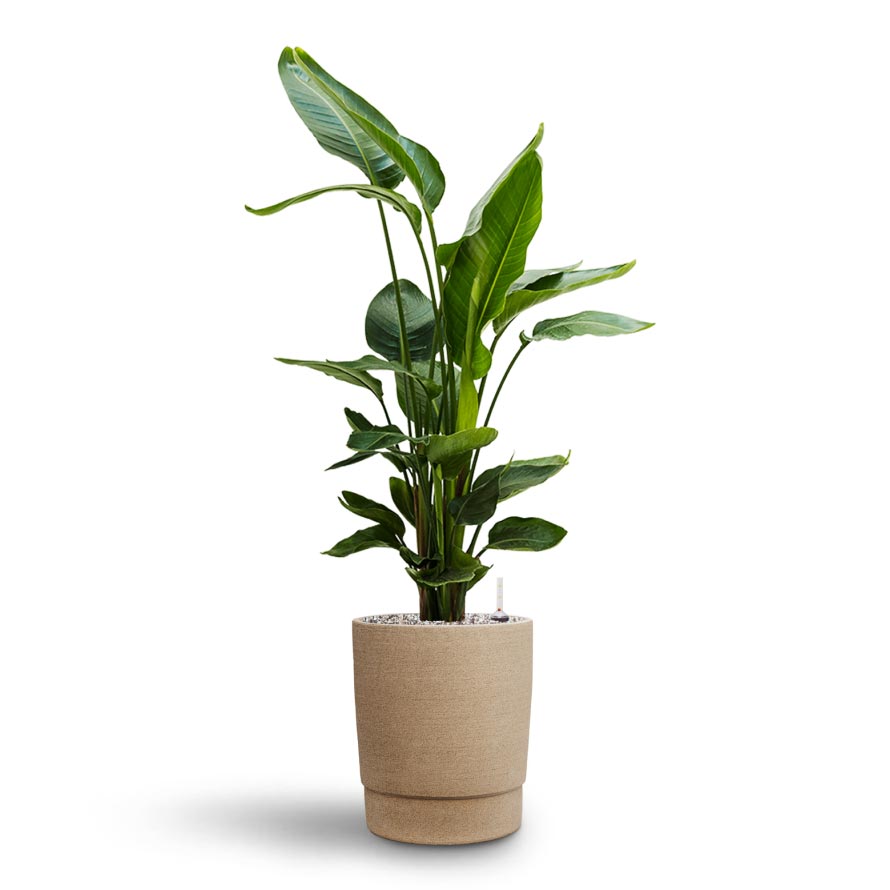

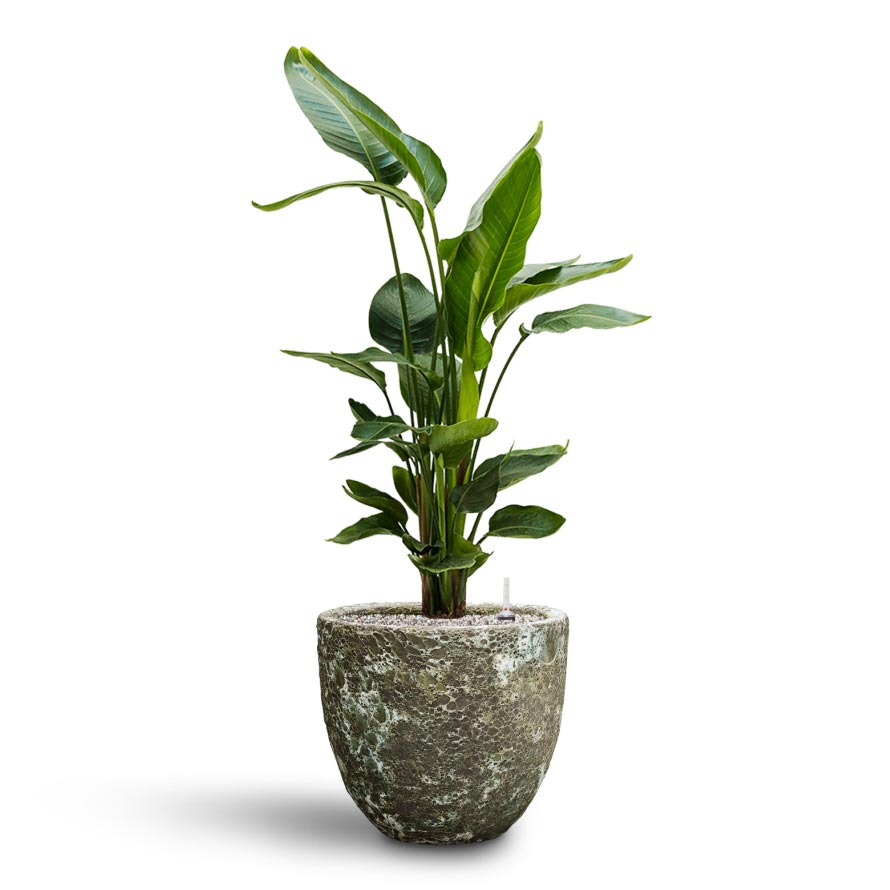
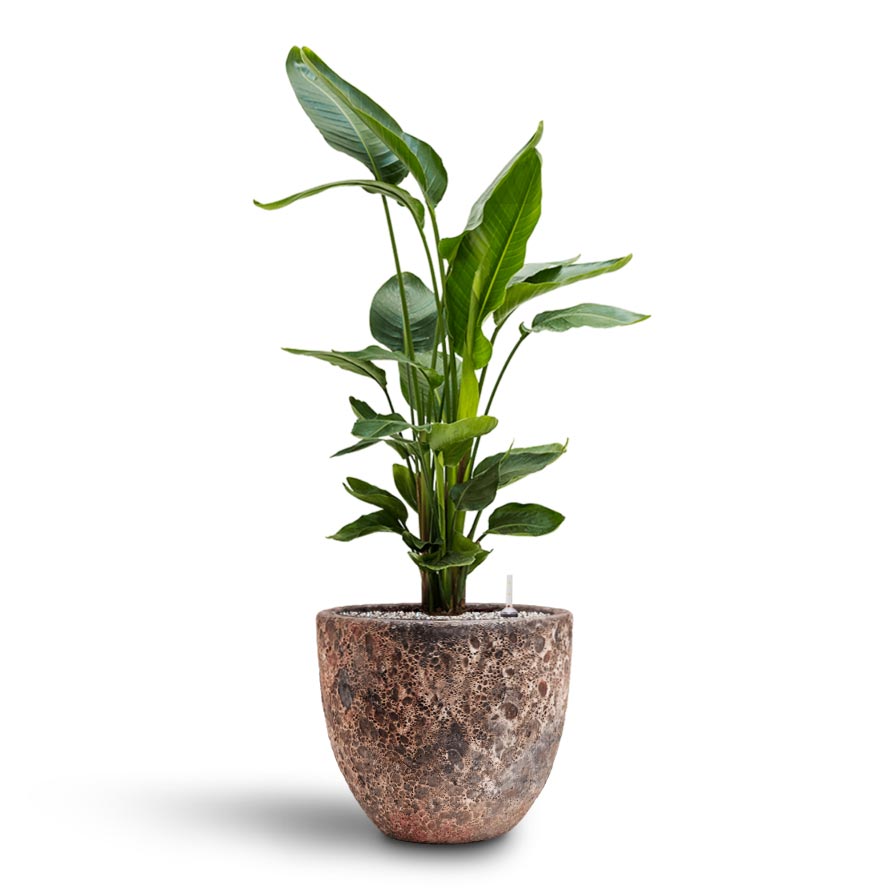
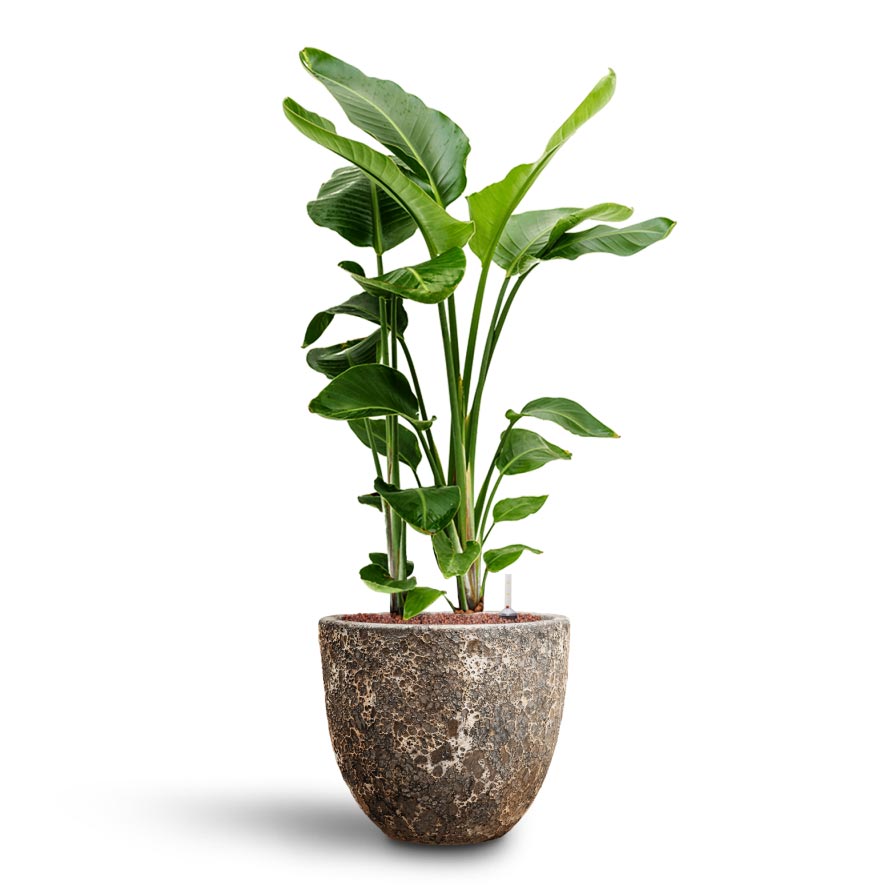
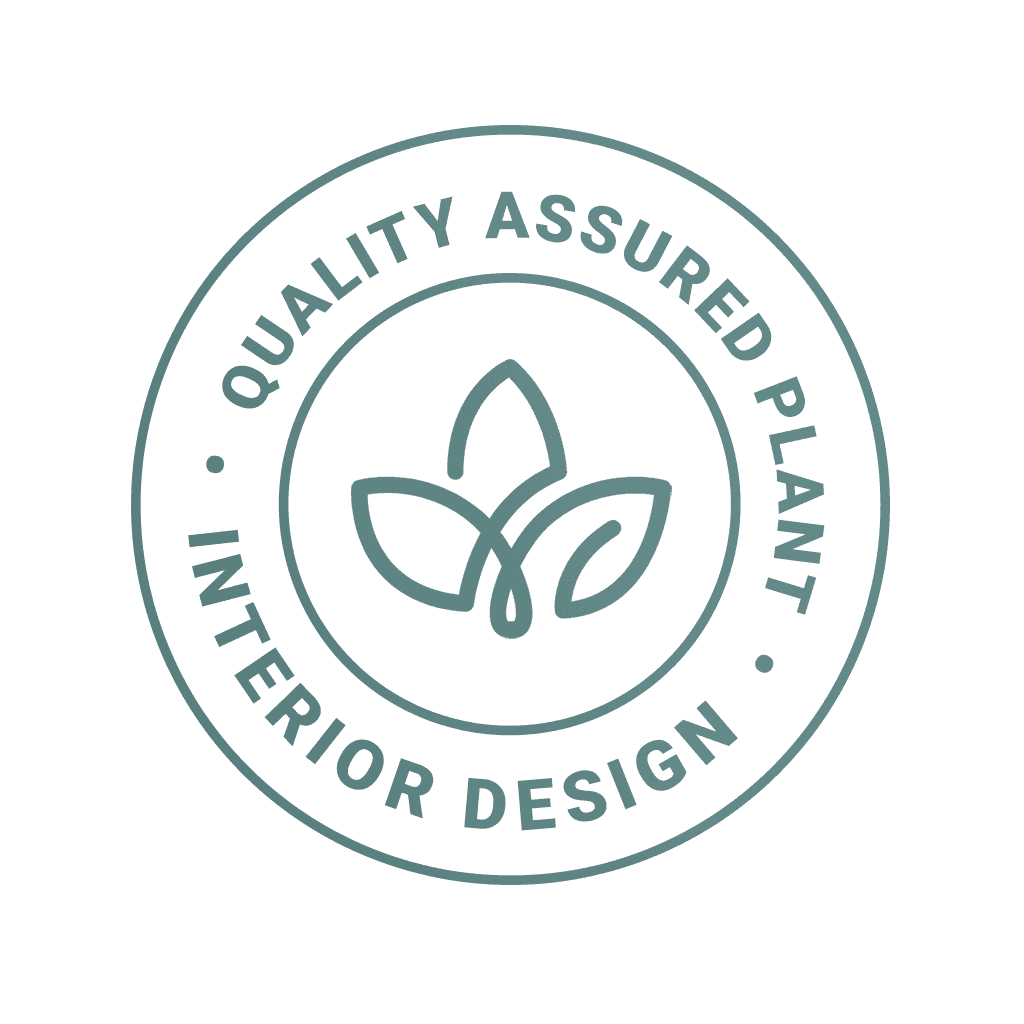
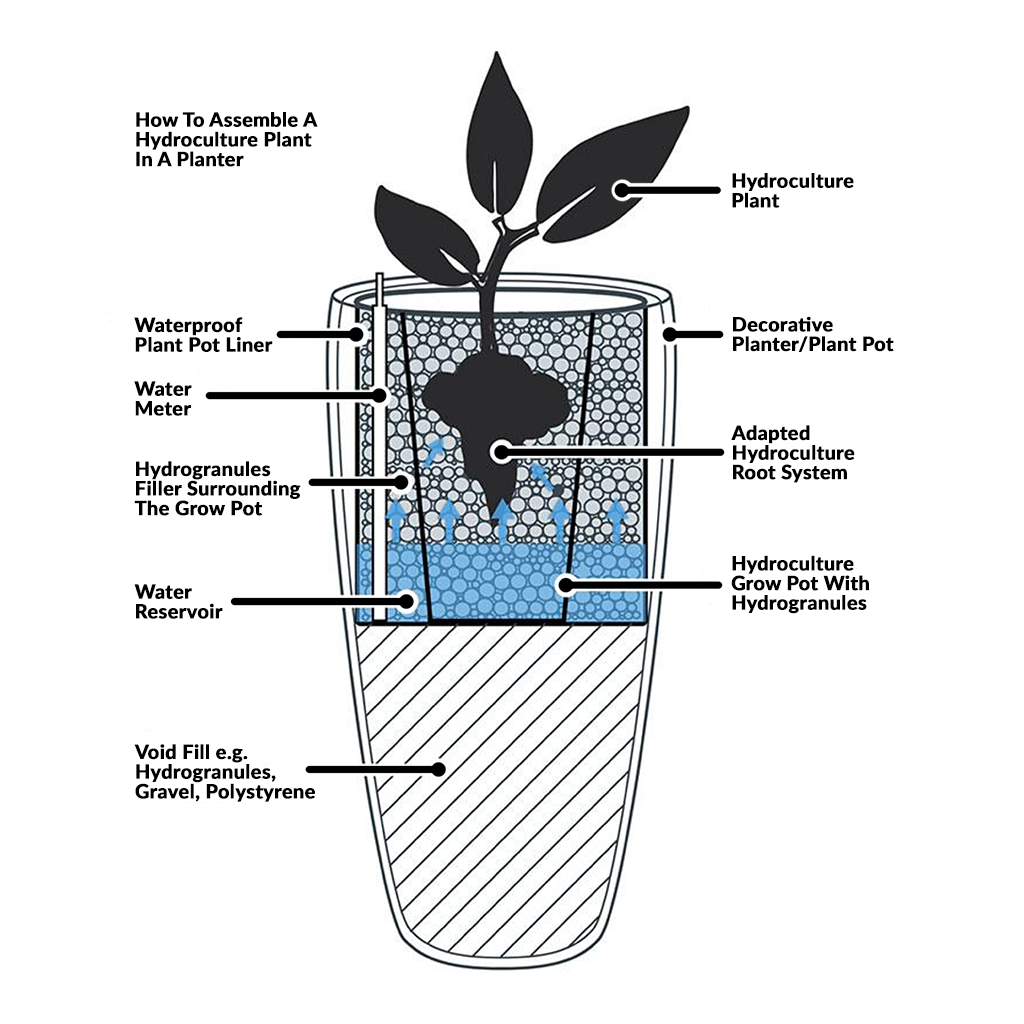

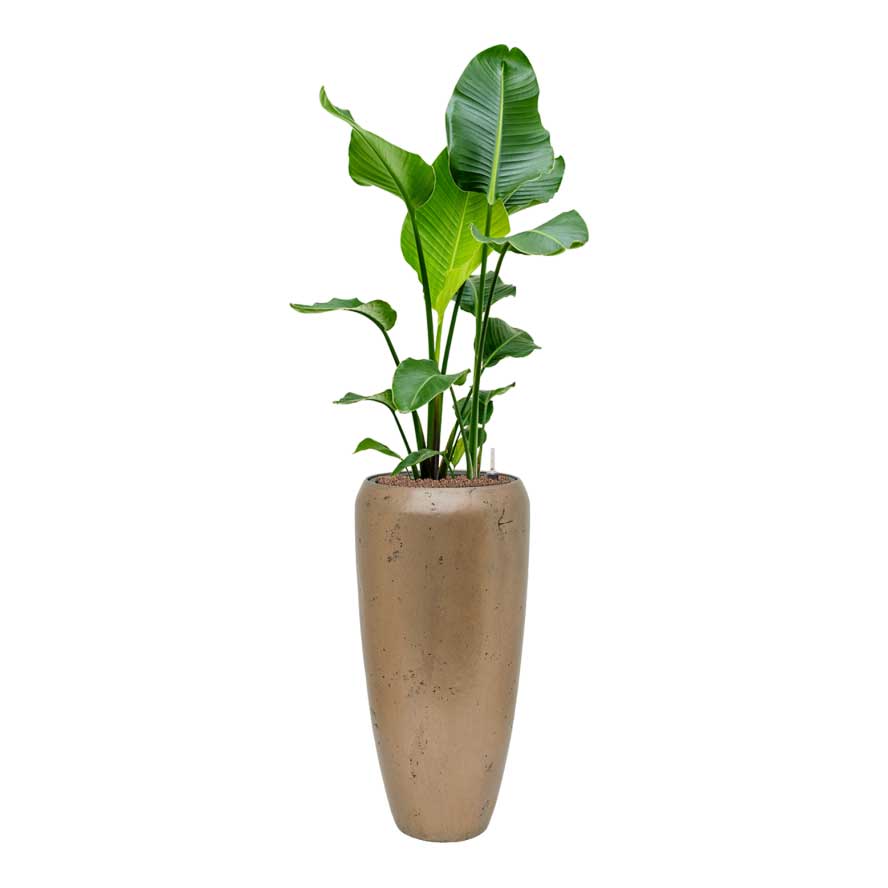
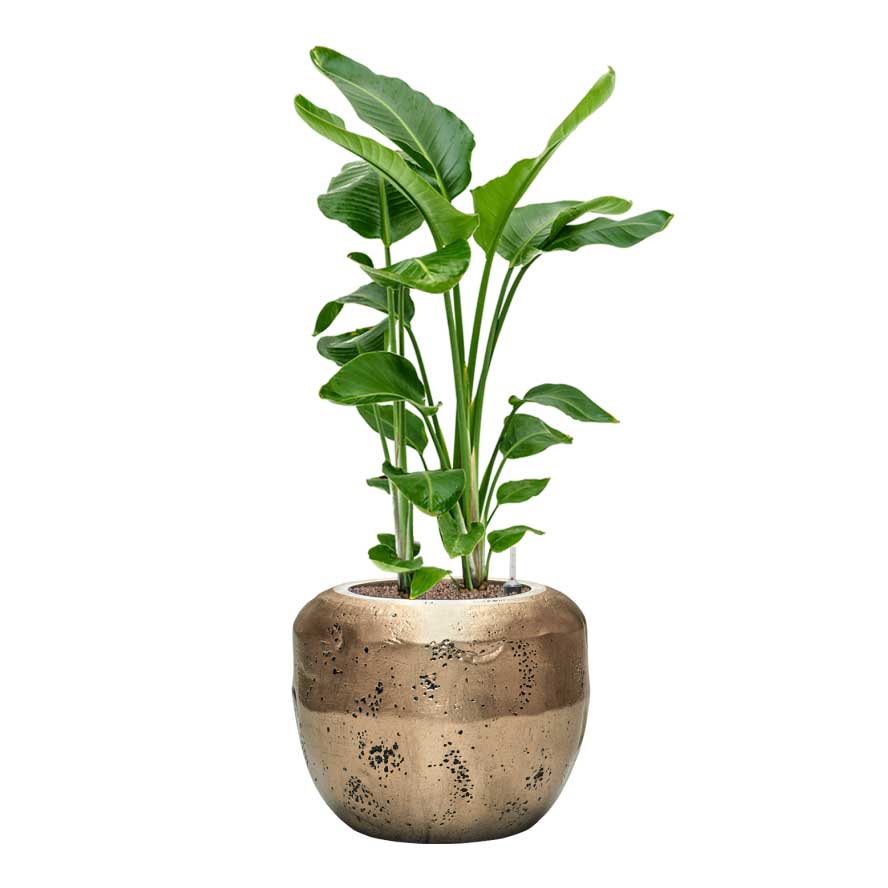
HydroCare plants are planted in hydrogranules instead of using soil.
Hydrogranules are manufactured from clay pellets that are baked at high temperatures to make them expand, a process a bit like making popcorn.
The open structure of the hydrogranules allows water and nutrients to be stored and released, creating the optimum conditions for indoor plants to thrive as well as simplifying maintenance requirements.
HydroCare plants have a lot of benefits over soil plants:
Moisture Levels: The open structure of the hydrogranules creates optimum moisture levels around the roots of the plant. Water stored in hydrogranules below the roots will be gently drawn up through capillary action for the roots to absorb. No more dried out roots or root rot.
Watering: A water meter on the side of the grow pot indicates the amount of water left in the hydrogranule reservoir below the roots. When it reaches the minimum level wait for 1-2 weeks then simply top it back up to the optimum level. The plant will pull water from the hydrogranules according to its needs so there is no risk of over or under watering and watering is less frequent.
Root Health: The open structure of our pH neutral hydrogranules allows air to circulate around the roots keeping them healthy and because they do not compact over time there is no need to top up.
HydroCare plants are adapted to these conditions and develop a smaller more fleshy root system making the plant more hardy and in a smaller grow pot meaning you have a wider choice of decorative planter styles. The requirement to repot as the plant grows is also significantly reduced.
Pest Control: Hydrogranules are an inert medium that is less susceptible to pests, fungi and bacteria which means healthier plants with less risk of disease.
When you buy a HydroCare plant, you need a few other bits and pieces to assemble the plant in your chosen planter or plant pot. Think of getting a HydroCare plant as a solution that needs to be assembled rather than just a plant.
We have a simple step by step video guide to assembling the HydroCare plant in a plant pot but essentially you need 5 things for hydro heaven:
1. The HydroCare plant in its hydroculture grow pot.
2. A water meter to slot into the side of the hydroculture grow pot.
3. A waterproof plastic liner for your decorative pot. Each HydroCare plant has an associated hydro kit that includes a waterproof liner to fit the hydroculture grow pot of the plant and a size tip to help you choose a decorative pot that will accommodate the specified waterproof pot liner for the plant.
4. Extra hydrogranules to fill around the grow pot and make a nice finish on top.
5. Hydroculture plant food, specifically formulated for use with hydrogranules.
Also known as the Wild Banana or Crane Plant, Strelitzia are known for their lush, tropical foliage. They make stunning architectural plants, due to their tall erect stems and wide, banana-like, paddle shaped leaves.
The HydroCare version of Strelitzia nicolai is the larger, white flowering relative of Strelizia reginea (the orange flowering Bird of Paradise).
Please note: Bird of Paradise may not always flower when kept indoors and plants are not shipped in flower. The leaves naturally tear and have a shabby chic, rugged appearance and foliage is unlikely to be pristine.
HydroCare - Strelitzia nicolai - Bird of Paradise Care & Info Guide
Horty Hints
Feeling the Burn! Even plants suffer sunburn, and the Bird of Paradise is no exception. While this plant prefers bright light, find a spot free of direct sunlight to avoid scorching.
The leaves will split naturally as the plant matures. This is to allow light to reach the lower parts of the plant. Rotate the plant occasionally to encourage even growth.
Fertiliser or Fungal? If you are heavy handed with the fertiliser, it will display as brown speckled markings on the leaves. If you haven't fertilised then it could be fungal. See our fungal remedies help guide.

Light
Strelitzia nicolai grow best in environments with bright, indirect light. Avoid direct sunlight however, as this may scorch the leaves and damage the flowers.
Watering
Keep an eye on the water meter. Water when the meter has been on minimum for 7 to 10 days. Check out our HydroCare set up guide for more information.
Temperature
The Bird of Paradise prefers warm temperatures from 21-28°C but can cope with temperatures as low as 13°C.
Humidity
Strelitzia will do best with increased humidity but can usually cope in normal household conditions. Increase the surrounding humidity in the winter to combat dry air from central heating.
Feed
Add a Hydroculture liquid feed every 2 to 3 waterings during the spring and summer months.
Height & Growth Rate
The Bird of Paradise is a fast-growing plant in warm conditions, usually reaching an ultimate height of 5-6m outdoors, while indoors it is more likely to stop growing around 3m.Please note: each plant is unique so available heights are approximate and the plant you receive may vary by ±10%.

Toxicity
Strelitzia are toxic to animals. There is less definitive information regarding the nicolai, with some sources listing this as non-toxic. In the event of uncertainty, we would recommend you consider this plant as toxic to animals.
Air Purifying
Not specifically known for its air purifying properties, however most broad leafed plants will filter airborne toxins to some degree.























